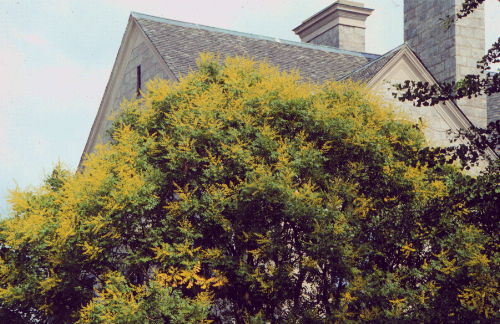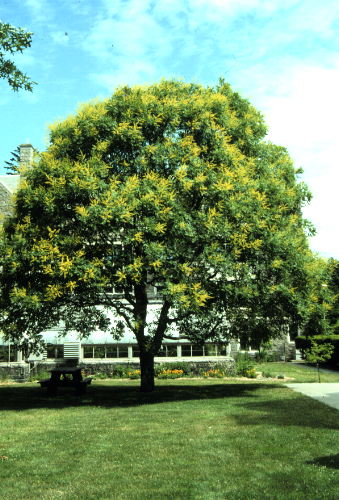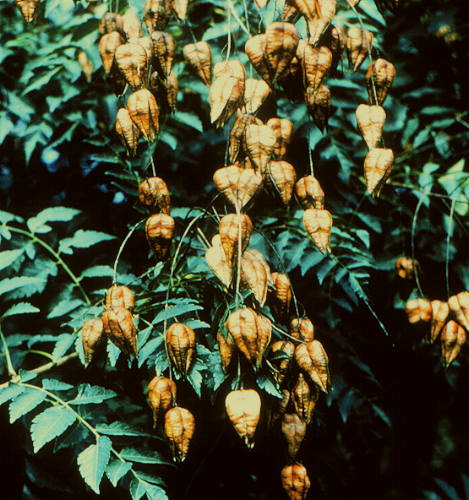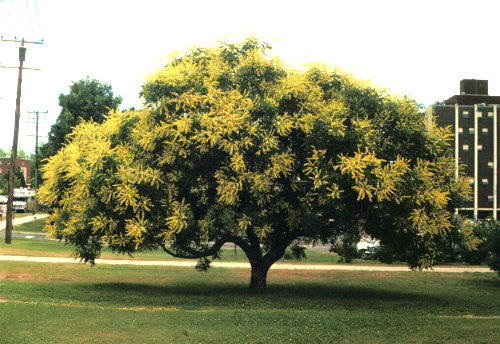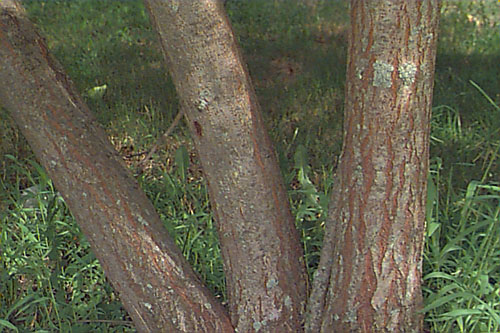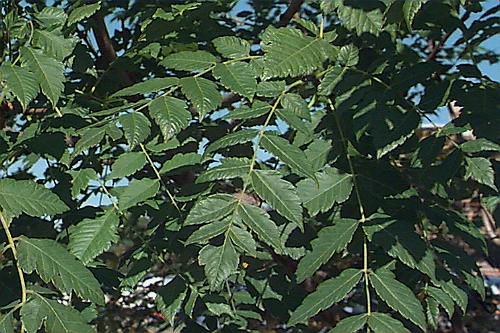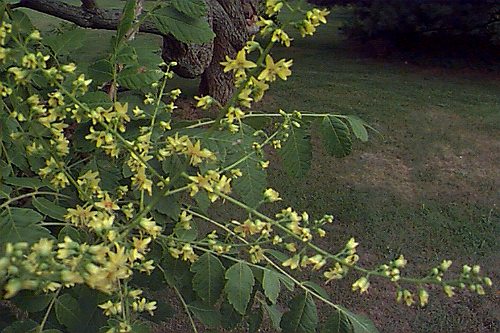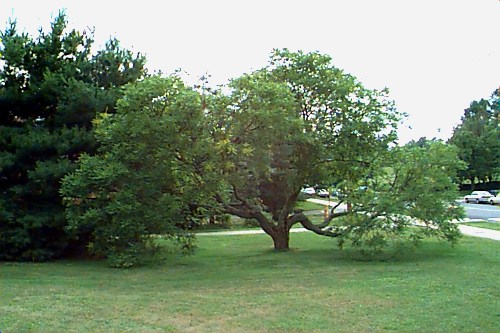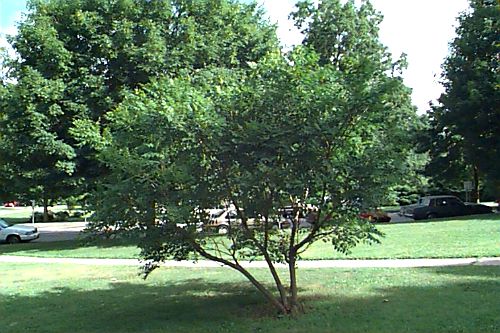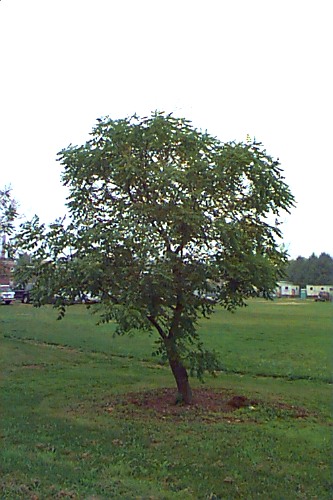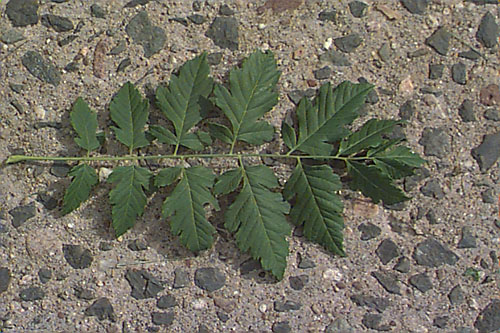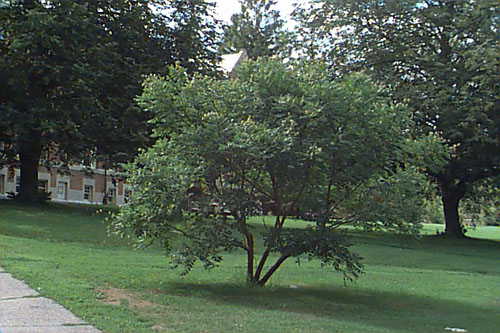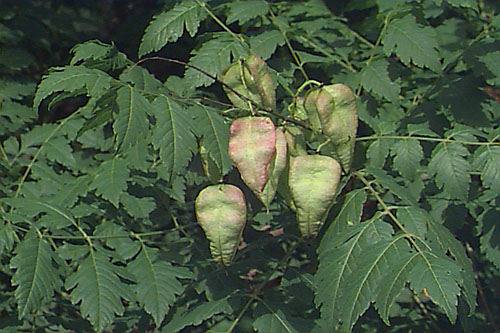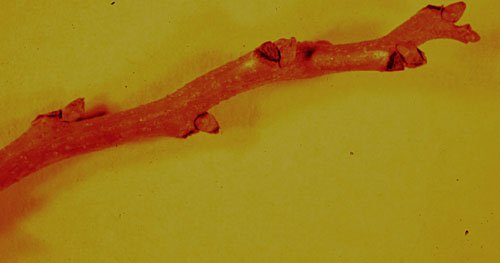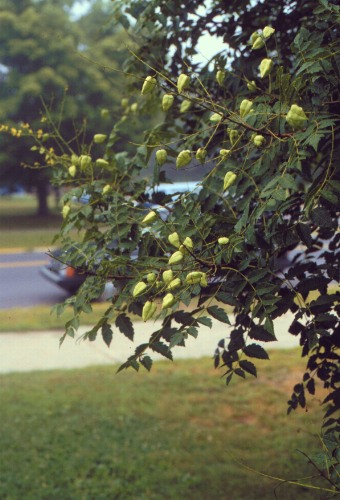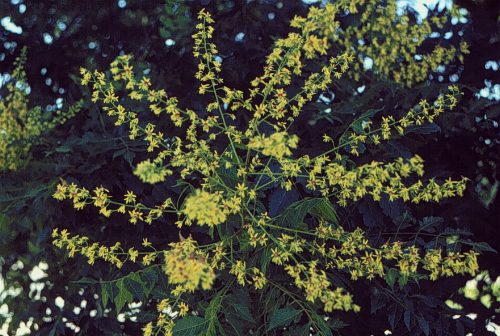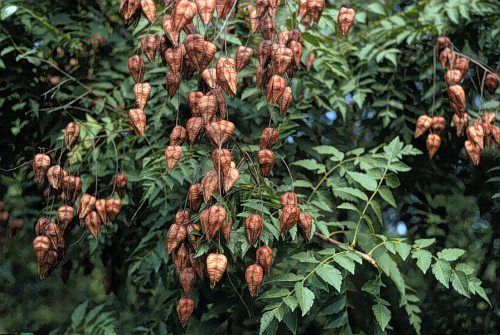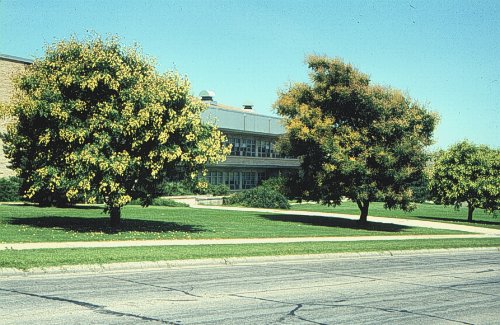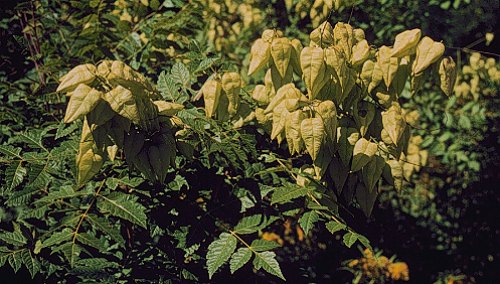Koelreuteria paniculata
Goldenraintree
Sapindaceae
ExpandHabitat
- native to China and Japan
- hardy to zone 5
- Special Note: This species has demonstrated an invasive tendency in Connecticut, meaning it may escape from cultivation and naturalize in minimally managed areas. For more information, .
Habit and Form
- a medium sized deciduous tree
- reaching 30' to 40' tall
- width is equal to, or greater than the height
- rounded shape
- branching is upright-spreading to irregular
- often sparingly branched
Summer Foliage
- alternate arranged leaves
- pinnately compound leaves with a few bipinnately compound leaflets
- leaflets are coarsely and irregularly incised or toothed
- leaves are 6" to 15" long
- leaflets are 1" to 4" long
- between 7 and 15 leaflets per leaf
- new leaf emerges with a wine or bronze cast
- mature foliage is bright or dark green
Autumn Foliage
- yellow or golden with an orange cast
- inconsistent fall color
- often only a yellowish-green
Flowers
- small flowers borne in large, loose upright clusters
- flower clusters are 12" to 15" long
- flowers are yellow with a red center
- bloom time is July
- can be showy
Fruit
- large (2" long) inflated papery capsules
- yellowish green in late summer
- changing to tan or brown in fall and persisting into winter
- interesting ornamental appeal
Bark
- color is a light gray-brown
- older branches and trunk with significant ridges and furrows
- moderate ornamental appeal
Culture
- full sun
- tolerant of drought, heat, wind
- tolerant of pollution
- prefers a soil with a neutral to slightly alkaline pH, but does well in slightly acidic soils as well
- best growth in moist, fertile soils
Landscape Use
- lawn tree
- specimen
- for smaller residences
- patio tree
- for urban sites
- useful for summer flowering
Liabilities
- twig kill in severe winters
- coral-spot fungus
- weak wooded
ID Features
- sparsely branches medium-sized tree of rounded outline
- yellow flowers in mid-summer
- inflated fruits
- twigs brownish with conspicuous lenticels
- buds are prominent, looking like Hershey's Kisses with a tuft of hair at the top
Propagation
- by root cuttings
- by seed
Cultivars/Varieties
'Fastigiata' - A rarely seen form, this plant is strictly upright -- to 25' tall with a spread of only 6'. It flowers very rarely and appears to be less cold hardy than the species.
'September' - This unusual form is offered by some specialty nurseries. It is notable for its later blooming period, often into August and September. One tradeoff is more limited hardiness, as the new growth does not appear to harden off well before the arrival of frost.

